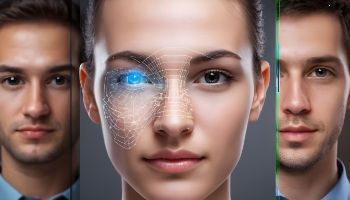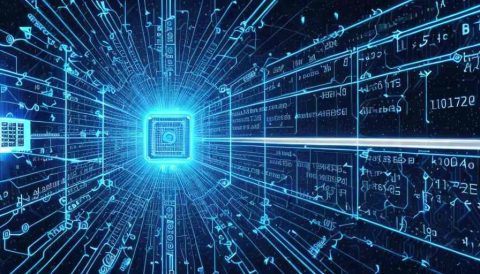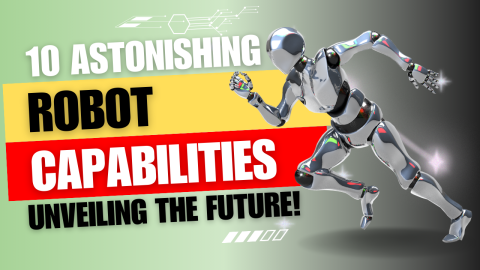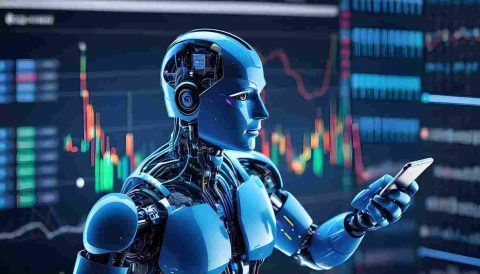Introduction:
Facial recognition, a cutting-edge technology used for identifying or verifying individuals by analyzing patterns based on their facial contours and features, involves the automated process of capturing, analyzing, and comparing patterns from images or video frames to existing facial databases. In today’s digital age, where security and efficiency are paramount, the technology used for face recognition offers a sophisticated solution for identity verification and access control. From securing sensitive facilities to simplifying user authentication on mobile devices, its significance cannot be overstated.
Technology used for face recognition:
Facial recognition relies on sophisticated technology used for face recognition, which analyzes facial contours and features to identify or verify individuals. This technology involves complex algorithms that capture, analyze, and compare patterns from images or video frames to existing facial databases. It plays a crucial role in enhancing security measures and streamlining authentication processes in various applications, ranging from access control systems to mobile device unlocking.
1- What is Facial Recognition?
Facial recognition, a cutting-edge technology used for identifying or verifying a person’s identity from an image or video frame, plays a pivotal role in various sectors today. As technology advances, the utilization of facial recognition has become increasingly prevalent, revolutionizing security measures, authentication processes, and user experiences across different domains.
2- Benefits of Facial Recognition Technology
-
Enhanced Security Measures
Facial recognition technology, employing sophisticated technology used for face recognition, greatly improves security measures through robust authentication and identification capabilities. Unlike conventional methods like passwords or PINs, susceptible to being forgotten, stolen, or shared, facial recognition provides a distinct and inherently secure means of identity verification.
-
Convenient Authentication Processes
With facial recognition, users can seamlessly authenticate their identities with just a glance, eliminating the need for cumbersome passwords or authentication tokens. This convenience not only enhances user experience but also improves operational efficiency in various applications, from unlocking smartphones to accessing secure facilities.
3- Use Cases of Facial Recognition Systems
-
Access Control and Security
-
Border Control
Facial recognition systems are deployed at border crossings and airports to enhance security by accurately identifying travelers and cross-referencing them with watchlists.
-
Surveillance Systems
Law enforcement agencies use facial recognition technology in surveillance systems to track and identify individuals of interest in public spaces, aiding in crime prevention and investigation efforts.
-
Identity Verification and Authentication
-
Biometric Attendance Systems
Facial recognition is integrated into attendance systems in workplaces and educational institutions, providing efficient and accurate means of tracking attendance.
-
Mobile Device Unlocking
Smartphones utilize facial recognition technology to enable secure and convenient unlocking, offering users a seamless authentication experience.
4- How Facial Recognition Works
-
Facial Detection
Facial recognition systems initiate by employing technology used for face recognition to detect and locate human faces within images or video frames. These systems utilize algorithms that analyze pixel patterns and facial features.
-
Feature Extraction
Once faces are detected, key facial features such as eyes, nose, and mouth are extracted and converted into a mathematical representation known as a faceprint.
-
Matching and Recognition
The extracted faceprint is compared with existing templates in a database using complex algorithms to determine a match, enabling accurate identification or verification of individuals.
5- Safety Concerns Surrounding Facial Recognition
-
Privacy Issues
Facial recognition technology raises significant privacy concerns, as it involves the collection and processing of biometric data without individuals’ explicit consent.
-
Potential for Misuse
There is a risk of facial recognition technology being misused for surveillance, profiling, or tracking individuals without their knowledge or consent, leading to potential violations of civil liberties.
6- Understanding Confidence Scores in Facial Recognition
-
Definition of Confidence Score
A confidence score in facial recognition represents the level of certainty or accuracy in the system’s match between the detected face and the stored template.
-
Importance in Accuracy Assessment
In face recognition systems, higher confidence scores signify a more accurate match, leveraging advanced technology used for face recognition. Conversely, lower scores may indicate potential inaccuracies or false positives, prompting the need for additional verification measures. This emphasizes the importance of ensuring robustness and accuracy in facial recognition algorithms to maintain reliability and enhance overall performance.
7- Other Types of Biometric Identification Technology
-
Iris Recognition
Iris recognition technology identifies individuals based on unique patterns in the iris of the eye, offering high accuracy and reliability for authentication purposes.
-
Fingerprint Recognition
Fingerprint recognition remains one of the most widely used biometric identification methods, leveraging distinctive patterns on fingertips for secure authentication.
8- Role of AWS in Facial Recognition
-
AWS Recognition Service
Amazon Web Services (AWS) offers the recognition service, a powerful facial recognition platform that provides developers with tools for building scalable and accurate facial analysis applications.
-
Features and Capabilities
AWS recognition offers a wide range of features, including face detection, recognition, and analysis, as well as facial similarity searches and celebrity recognition.
9- Advantages of Facial Recognition
-
Efficiency and Time-saving
Facial recognition technology streamlines authentication processes, saving time and effort for both users and organizations by eliminating the need for manual input or verification.
-
Enhanced User Experience
By offering seamless and intuitive authentication experiences, facial recognition enhances user satisfaction and engagement, driving adoption across various applications and industries.
10- Disadvantages of Facial Recognition
-
Vulnerability to Errors
Facial recognition systems are susceptible to errors, especially in challenging conditions such as poor lighting or occlusions, which can result in false matches or rejections.
-
Ethical and Legal Implications
The widespread adoption of facial recognition raises ethical concerns regarding privacy, surveillance, and potential biases in algorithmic decision-making, prompting calls for regulatory oversight and accountability.
11- Top 7 Trends in Facial Recognition
Facial recognition technology is constantly evolving, driven by advancements in artificial intelligence and the increasing demand for innovative solutions across various industries. Here are the top seven trends shaping the future of facial recognition:
- Advancements in Deep Learning: The integration of deep learning algorithms has significantly enhanced the accuracy and performance of facial recognition systems. By leveraging neural networks, facial recognition technology can better detect and recognize faces even in challenging conditions, such as low light or partial occlusions.
- Emotion Recognition: There is growing interest in incorporating emotion recognition capabilities into facial recognition systems. By analyzing facial expressions and micro-expressions, these systems can infer emotional states, offering valuable insights for applications in marketing, customer service, and mental health assessment.
- Mask Detection and Adaptation: With the widespread adoption of face masks due to health concerns, facial recognition systems are being updated to accommodate mask-wearing individuals. Advanced algorithms can now accurately detect and recognize faces even when partially covered by masks, ensuring seamless authentication and identification processes.
- Privacy-Preserving Solutions: As concerns about privacy and data security continue to rise, there is a shift towards developing privacy-preserving facial recognition solutions. Techniques such as federated learning and on-device processing enable facial recognition models to be trained and deployed without compromising sensitive user data, fostering trust and compliance with privacy regulations.
- Multimodal Biometric Integration: Facial recognition is increasingly being integrated with other biometric modalities, such as iris recognition and voice recognition, to enhance authentication accuracy and robustness. Multimodal biometric systems offer a more comprehensive approach to identity verification, reducing the risk of false positives and improving overall security.
- Edge Computing for Real-time Processing: Edge computing technology enables facial recognition algorithms to run directly on edge devices, such as smartphones and IoT devices, without relying on cloud infrastructure. This enables real-time processing of facial data, reducing latency and enhancing responsiveness for applications requiring quick decision-making, such as access control and surveillance.
- Ethical and Regulatory Frameworks: With the growing deployment of facial recognition technology, there is a heightened focus on establishing ethical guidelines and regulatory frameworks to govern its use. Governments and industry bodies are working together to define standards for data collection, consent management, and algorithmic transparency, ensuring responsible and equitable deployment of facial recognition systems.
These trends underscore the transformative potential of facial recognition technology, driving innovation, and reshaping interactions in diverse sectors ranging from security and healthcare to retail and entertainment. As technology continues to evolve, it is crucial to address ethical, legal, and societal implications to realize its full benefits while mitigating risks and ensuring inclusivity and privacy for all users.
12- Facial Recognition AI
-
Integration in Various Industries
Facial recognition AI is being integrated into various industries, including retail, healthcare, and finance, to enhance security, personalize experiences, and streamline operations.
-
Future Prospects
With ongoing research and development, the future of facial recognition AI holds promise for further advancements in accuracy, scalability, and ethical governance, unlocking new opportunities for innovation and growth.
13- How Facial Recognition Works in Mobile Devices
-
Implementation in Smartphones
Mobile devices utilize facial recognition technology, employing advanced technology used for face recognition. This includes front-facing cameras and specialized sensors to securely unlock and authenticate users by capturing and analyzing facial features.
-
Security and Usability Considerations
While facial recognition offers convenience, ensuring robust security and protecting user privacy remain paramount considerations for mobile device manufacturers and software developers.
Conclusion:
in conclusion, Facial recognition technology, utilizing cutting-edge technology used for face recognition, is reshaping our lives by enhancing security, convenience, and personalized experiences. As technology drives innovation, addressing safety, ethical, and regulatory concerns become paramount. This transformative technology holds immense potential to redefine interactions, offering unparalleled convenience, security, and personalization. To responsibly harness its benefits, businesses must prioritize ethical considerations, regulatory compliance, and user privacy.
FAQ:
1- What software is used for face recognition?
Face recognition commonly utilizes various software solutions, including but not limited to OpenCV, Dlib, Microsoft Azure Face API, Amazon Recognition, and Face++.
2- Which method is used for face recognition?
Face recognition employs various methods, with the most common being feature-based methods, template-based methods, and deep learning-based methods. These methods analyze facial features, such as the distance between eyes and the shape of the nose and mouth, to identify individuals accurately.







[…] Read about technology used for face recognition […]